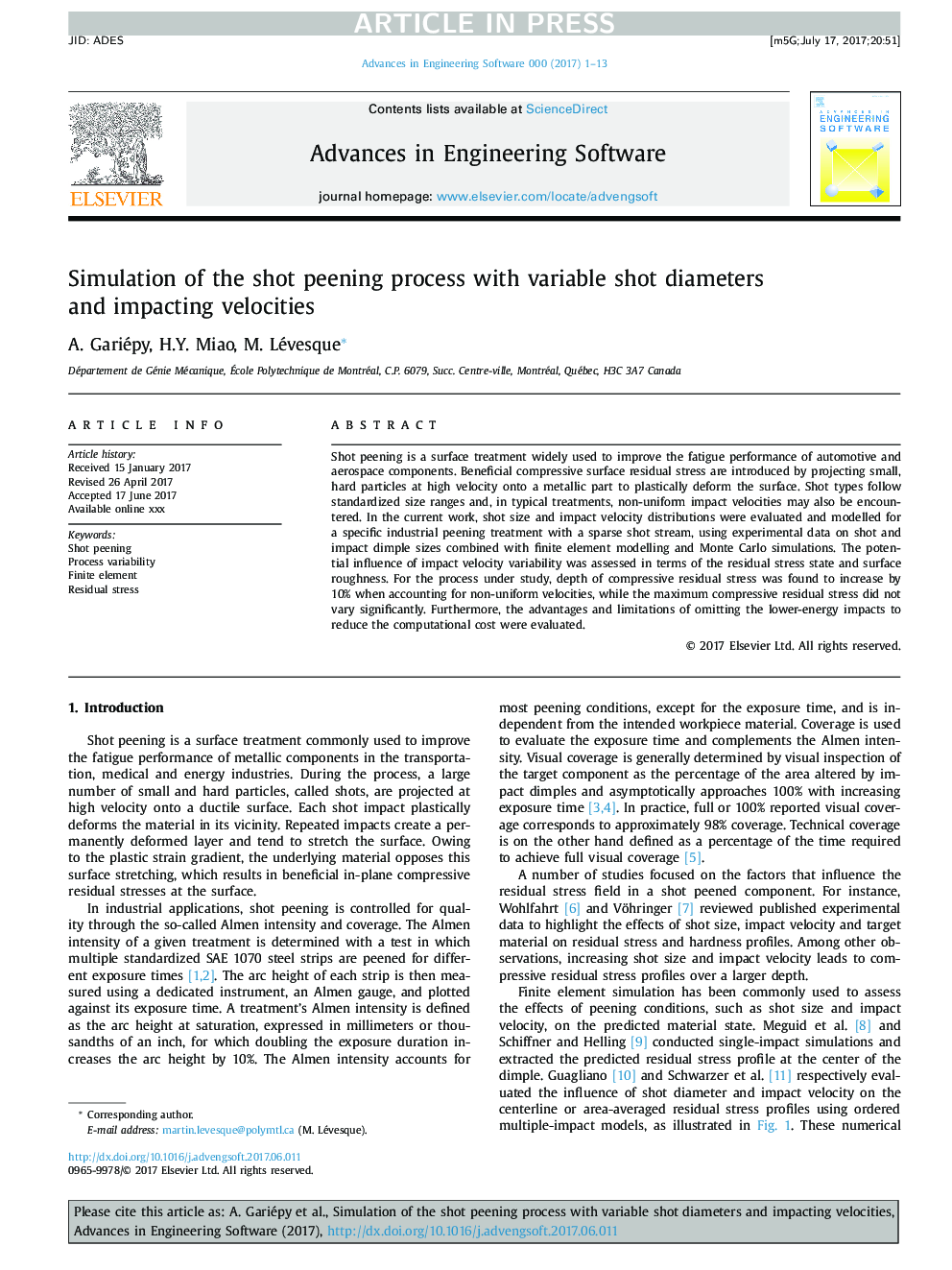| Article ID | Journal | Published Year | Pages | File Type |
|---|---|---|---|---|
| 6961554 | Advances in Engineering Software | 2017 | 13 Pages |
Abstract
Shot peening is a surface treatment widely used to improve the fatigue performance of automotive and aerospace components. Beneficial compressive surface residual stress are introduced by projecting small, hard particles at high velocity onto a metallic part to plastically deform the surface. Shot types follow standardized size ranges and, in typical treatments, non-uniform impact velocities may also be encountered. In the current work, shot size and impact velocity distributions were evaluated and modelled for a specific industrial peening treatment with a sparse shot stream, using experimental data on shot and impact dimple sizes combined with finite element modelling and Monte Carlo simulations. The potential influence of impact velocity variability was assessed in terms of the residual stress state and surface roughness. For the process under study, depth of compressive residual stress was found to increase by 10% when accounting for non-uniform velocities, while the maximum compressive residual stress did not vary significantly. Furthermore, the advantages and limitations of omitting the lower-energy impacts to reduce the computational cost were evaluated.
Related Topics
Physical Sciences and Engineering
Computer Science
Software
Authors
A. Gariépy, H.Y. Miao, M. Lévesque,
